Optimising any ecommerce website for search engines is an ongoing process and depending on your particular retail niche, how seriously your competitors are taking SEO and your starting point (i.e. your website’s domain authority and level of search engine-friendliness when you start your SEO strategy) it can realistically be many (many) months before you start catching up with other ecommerce sites in the same space as you who already had a head start.
However, although SEO is a long-term strategy that can offer truly long-lasting results, that doesn’t mean that there are not key indicators of progress along the way that you can use to:
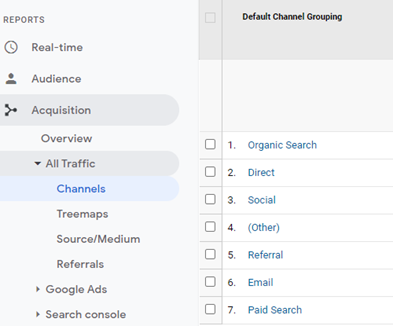 You also need to consider that a transaction that is attributed to one particular channel is unlikely not to have involved other channels too. Website visitors don’t always convert on the first visit to your site (especially for higher ticket or more considered purchases) but what if they first visit your site through a search engine, leave, then return another time to complete their purchase, this time arriving at your site via social media or PPC? Will SEO get any credit for the part it played in the sale? Thankfully, Google Analytics can provide some insight there too.
You also need to consider that a transaction that is attributed to one particular channel is unlikely not to have involved other channels too. Website visitors don’t always convert on the first visit to your site (especially for higher ticket or more considered purchases) but what if they first visit your site through a search engine, leave, then return another time to complete their purchase, this time arriving at your site via social media or PPC? Will SEO get any credit for the part it played in the sale? Thankfully, Google Analytics can provide some insight there too.
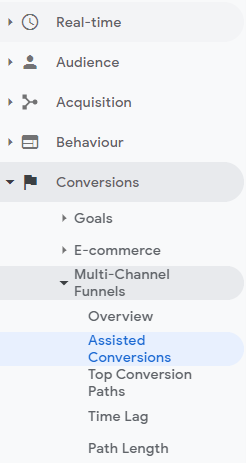 Using the assisted conversions feature in Google Analytics, you can access some data that will help to show the sales through your website that the organic channel played an important role in. It’s important to understand that this data isn’t necessarily accurate to the nearest penny and no attribution model is perfect, but it can act as a good guide to show the importance of your SEO efforts to the customer journey and can put a rough value to this, which is often useful when reporting to stakeholders.
You can find this particular SEO analysis report under Conversions > Multi-Channel Funnels > Assisted Conversions
Make sure that you’re viewing ‘conversions’ from the drop-down menu to get a view on how organic has assisted with transactions but wasn’t the final source of the converting traffic.
There are many more ways to use different attribution models to get a view on how your various channels are performing and contributing, but that is a whole different blog post!
Using the assisted conversions feature in Google Analytics, you can access some data that will help to show the sales through your website that the organic channel played an important role in. It’s important to understand that this data isn’t necessarily accurate to the nearest penny and no attribution model is perfect, but it can act as a good guide to show the importance of your SEO efforts to the customer journey and can put a rough value to this, which is often useful when reporting to stakeholders.
You can find this particular SEO analysis report under Conversions > Multi-Channel Funnels > Assisted Conversions
Make sure that you’re viewing ‘conversions’ from the drop-down menu to get a view on how organic has assisted with transactions but wasn’t the final source of the converting traffic.
There are many more ways to use different attribution models to get a view on how your various channels are performing and contributing, but that is a whole different blog post!
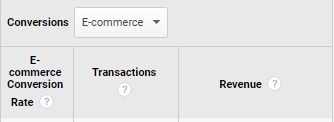 Again, looking at your organic conversion rate in comparison with other channels can be useful. Is it higher or lower than paid search, for example? If your SEO strategy is performing well, you would expect that as organic traffic goes up, the conversion rate stays the same or improves. If you’re finding that your conversion rate is dropping, you might need to look again at the traffic you’re attracting with your SEO efforts. Is it too top of the funnel? Do you need to focus more on the keywords that show the searcher has buying intent?
Again, looking at your organic conversion rate in comparison with other channels can be useful. Is it higher or lower than paid search, for example? If your SEO strategy is performing well, you would expect that as organic traffic goes up, the conversion rate stays the same or improves. If you’re finding that your conversion rate is dropping, you might need to look again at the traffic you’re attracting with your SEO efforts. Is it too top of the funnel? Do you need to focus more on the keywords that show the searcher has buying intent?
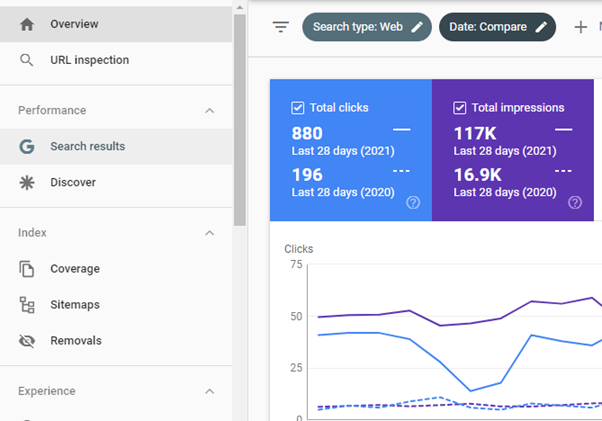 If your impressions are high but your clicks are low, this can be an indication that you’re not really hitting the mark in terms of the right audience for the search results you’re appearing in and you may want to take another look at your target keywords. If you think the audience is right but you could engage better with them, you may want to try tweaking your page meta descriptions to encourage more click-throughs.
If your impressions are high but your clicks are low, this can be an indication that you’re not really hitting the mark in terms of the right audience for the search results you’re appearing in and you may want to take another look at your target keywords. If you think the audience is right but you could engage better with them, you may want to try tweaking your page meta descriptions to encourage more click-throughs.
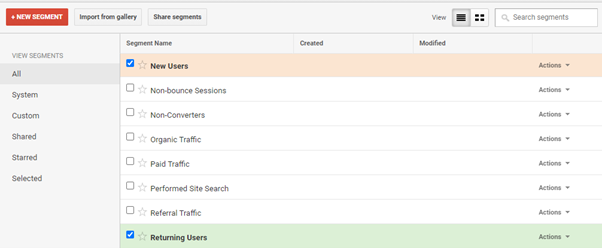 An increase in completed transactions and revenue from organic first-time visitors (especially in comparison to the same metric for other channels) can be a good indication that you are attracting a hyper-relevant and engaged audience of people who are ready to make a purchase with your organic strategy.
Depending somewhat on what you sell, it’s likely that returning customers are something you want to encourage as often as possible (exceptions could include if you sell products with a long useful life), so don’t forget about your returning site visitors and what this can tell you about your SEO performance.
For example, if your SEO strategy is focused on providing shoppers with content that is useful at every stage of their buyer journey i.e. awareness, consideration, conversion (and then bringing people back to shop again) then understanding what returning visitors are doing on the site could help you to see if this element is performing as you hope. For example, if a first-time visitor lands on a blog post and then visits a product page but doesn’t buy, do they then return to the site another time to go back to the product page and then buy? Building a picture of this can be really useful to help you assess SEO performance.
You can use segments in Google Analytics to separate out these two traffic groups and then review their behaviour and paths through the site in isolation.
An increase in completed transactions and revenue from organic first-time visitors (especially in comparison to the same metric for other channels) can be a good indication that you are attracting a hyper-relevant and engaged audience of people who are ready to make a purchase with your organic strategy.
Depending somewhat on what you sell, it’s likely that returning customers are something you want to encourage as often as possible (exceptions could include if you sell products with a long useful life), so don’t forget about your returning site visitors and what this can tell you about your SEO performance.
For example, if your SEO strategy is focused on providing shoppers with content that is useful at every stage of their buyer journey i.e. awareness, consideration, conversion (and then bringing people back to shop again) then understanding what returning visitors are doing on the site could help you to see if this element is performing as you hope. For example, if a first-time visitor lands on a blog post and then visits a product page but doesn’t buy, do they then return to the site another time to go back to the product page and then buy? Building a picture of this can be really useful to help you assess SEO performance.
You can use segments in Google Analytics to separate out these two traffic groups and then review their behaviour and paths through the site in isolation.
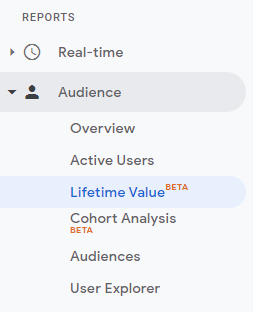 In a similar way to analysing the revenue generated by different channels in Google Analytics, the estimated lifetime value of organic traffic can also be a useful metric to both compare to the other channels and to show increases over time.
Found under Audience > Lifetime Value (Beta), you can view the lifetime value of traffic from each channel. If part of your SEO strategy is focused on return customers, then this can be a great way to show whether or not it’s performing as you wish and put a figure onto this for stakeholders.
In a similar way to analysing the revenue generated by different channels in Google Analytics, the estimated lifetime value of organic traffic can also be a useful metric to both compare to the other channels and to show increases over time.
Found under Audience > Lifetime Value (Beta), you can view the lifetime value of traffic from each channel. If part of your SEO strategy is focused on return customers, then this can be a great way to show whether or not it’s performing as you wish and put a figure onto this for stakeholders.
- Show stakeholders that SEO progress is being made and the value it’s bringing to the business
- Learn from current SEO performance and tweak your strategy accordingly to maximise results
What are good SEO metrics?
The right SEO KPIs to measure will vary from business to business somewhat, but in ecommerce, there is always going to be a key focus on metrics that relate directly to sales and revenue. These are things that need to be tracked, but they are not the only ways to measure the performance of your SEO strategy. It’s important not to look at every possible KPI, but instead focus on the ones with true meaning to your specific SEO strategy objectives. It’s also vital to benchmark your chosen KPIs right at the beginning, so you can chart the progress over time from when you first start SEO activity. This blog looks at seven essential KPIs that you can benchmark and track in order to measure organic performance, prove value and use to evolve your ecommerce SEO strategy moving forward.1. Organic website transactions and revenue
Use Google Analytics and the relevant segments to view the organic traffic and results separately from the traffic that comes in from other sources. This is likely to be the metric that your stakeholders are most interested in, as seeing increases in the number of organic sales and resulting revenue through your site obviously makes a tangible difference to your bottom line. However, it’s not just the numbers alone that should be measured; these also need to be reviewed in the context of other channels too and weighed up against what you’re spending on each to give a useful and accurate ROI figure for SEO. You also need to consider that a transaction that is attributed to one particular channel is unlikely not to have involved other channels too. Website visitors don’t always convert on the first visit to your site (especially for higher ticket or more considered purchases) but what if they first visit your site through a search engine, leave, then return another time to complete their purchase, this time arriving at your site via social media or PPC? Will SEO get any credit for the part it played in the sale? Thankfully, Google Analytics can provide some insight there too.
You also need to consider that a transaction that is attributed to one particular channel is unlikely not to have involved other channels too. Website visitors don’t always convert on the first visit to your site (especially for higher ticket or more considered purchases) but what if they first visit your site through a search engine, leave, then return another time to complete their purchase, this time arriving at your site via social media or PPC? Will SEO get any credit for the part it played in the sale? Thankfully, Google Analytics can provide some insight there too.
2. Organic assisted conversions
 Using the assisted conversions feature in Google Analytics, you can access some data that will help to show the sales through your website that the organic channel played an important role in. It’s important to understand that this data isn’t necessarily accurate to the nearest penny and no attribution model is perfect, but it can act as a good guide to show the importance of your SEO efforts to the customer journey and can put a rough value to this, which is often useful when reporting to stakeholders.
You can find this particular SEO analysis report under Conversions > Multi-Channel Funnels > Assisted Conversions
Make sure that you’re viewing ‘conversions’ from the drop-down menu to get a view on how organic has assisted with transactions but wasn’t the final source of the converting traffic.
There are many more ways to use different attribution models to get a view on how your various channels are performing and contributing, but that is a whole different blog post!
Using the assisted conversions feature in Google Analytics, you can access some data that will help to show the sales through your website that the organic channel played an important role in. It’s important to understand that this data isn’t necessarily accurate to the nearest penny and no attribution model is perfect, but it can act as a good guide to show the importance of your SEO efforts to the customer journey and can put a rough value to this, which is often useful when reporting to stakeholders.
You can find this particular SEO analysis report under Conversions > Multi-Channel Funnels > Assisted Conversions
Make sure that you’re viewing ‘conversions’ from the drop-down menu to get a view on how organic has assisted with transactions but wasn’t the final source of the converting traffic.
There are many more ways to use different attribution models to get a view on how your various channels are performing and contributing, but that is a whole different blog post!
3. Organic bounce rate
Bounce rate can be a good measure of your performance with SEO on a few different levels, but from an ecommerce SEO point of view, checking your organic traffic bounce rate and comparing it to traffic from your other channels can be useful because it can help indicate if the keywords that you’re ranking for are bringing the right kind of traffic to the site. For a website that offers a great deal of information for those researching something, a high bounce rate can simply mean that the visitor found the information they needed on the page they saw and didn’t need anything else, so left. For ecommerce however, visitors who leave a product page without buying aren’t generally considered a good thing for retailers. If your organic bounce rate is lower than it used to be or lower than some of the other channels, it can be a sign that your keyword targeting is doing a decent job at bringing relevant people to your site that are interested in what you’re saying and selling. If your bounce rate goes up over time as you bring in more organic visitors, this can be a sign that you maybe need to review your keyword targeting to see how you can bring in more people with buying intent.4. Organic conversion rate
Having a low bounce rate for organic traffic on your ecommerce site is great in showing that your audience is being engaged by your site, but what about your conversion rate? Organic visitors may be landing on your site and viewing a few different pages before they leave, but are they actually converting into customers? Find this under the Acquisition > Channels report, ensuring the conversions box is set to ‘Ecommerce’ to show you the conversion rate, transactions and revenue attributed to each channel. Again, looking at your organic conversion rate in comparison with other channels can be useful. Is it higher or lower than paid search, for example? If your SEO strategy is performing well, you would expect that as organic traffic goes up, the conversion rate stays the same or improves. If you’re finding that your conversion rate is dropping, you might need to look again at the traffic you’re attracting with your SEO efforts. Is it too top of the funnel? Do you need to focus more on the keywords that show the searcher has buying intent?
Again, looking at your organic conversion rate in comparison with other channels can be useful. Is it higher or lower than paid search, for example? If your SEO strategy is performing well, you would expect that as organic traffic goes up, the conversion rate stays the same or improves. If you’re finding that your conversion rate is dropping, you might need to look again at the traffic you’re attracting with your SEO efforts. Is it too top of the funnel? Do you need to focus more on the keywords that show the searcher has buying intent?
5. Non-brand keyword visibility and clicks from search engine results
With Google Search Console, you can look at keyword performance from a site-wide as well as individual page point of view. The number of search engine result impressions that a certain keyword is returning and the number of clicks that come from this can be a good indication of how visible your webpages are for the terms you want to rank for and show growth over time in a way that is more meaningful than just looking at rankings alone. Where a keyword ranks in search engine results is only important if the people that visit the site through this are actually turning into customers rather than just being site visitors that don’t actually bring you any return. If your impressions are high but your clicks are low, this can be an indication that you’re not really hitting the mark in terms of the right audience for the search results you’re appearing in and you may want to take another look at your target keywords. If you think the audience is right but you could engage better with them, you may want to try tweaking your page meta descriptions to encourage more click-throughs.
If your impressions are high but your clicks are low, this can be an indication that you’re not really hitting the mark in terms of the right audience for the search results you’re appearing in and you may want to take another look at your target keywords. If you think the audience is right but you could engage better with them, you may want to try tweaking your page meta descriptions to encourage more click-throughs.
6. Insight from tracking organic new vs returning customers
It’s an ecommerce brand’s dream that visitors end up as customers on that first website visit, but the reality is that this isn’t always the case for today’s savvy shoppers, who often have several touchpoints with a brand before making a purchase. That being said, looking at the organic traffic’s new and returning visitor rates can be a useful KPI for SEO progress, especially when tracked over a sustained period of time. An increase in completed transactions and revenue from organic first-time visitors (especially in comparison to the same metric for other channels) can be a good indication that you are attracting a hyper-relevant and engaged audience of people who are ready to make a purchase with your organic strategy.
Depending somewhat on what you sell, it’s likely that returning customers are something you want to encourage as often as possible (exceptions could include if you sell products with a long useful life), so don’t forget about your returning site visitors and what this can tell you about your SEO performance.
For example, if your SEO strategy is focused on providing shoppers with content that is useful at every stage of their buyer journey i.e. awareness, consideration, conversion (and then bringing people back to shop again) then understanding what returning visitors are doing on the site could help you to see if this element is performing as you hope. For example, if a first-time visitor lands on a blog post and then visits a product page but doesn’t buy, do they then return to the site another time to go back to the product page and then buy? Building a picture of this can be really useful to help you assess SEO performance.
You can use segments in Google Analytics to separate out these two traffic groups and then review their behaviour and paths through the site in isolation.
An increase in completed transactions and revenue from organic first-time visitors (especially in comparison to the same metric for other channels) can be a good indication that you are attracting a hyper-relevant and engaged audience of people who are ready to make a purchase with your organic strategy.
Depending somewhat on what you sell, it’s likely that returning customers are something you want to encourage as often as possible (exceptions could include if you sell products with a long useful life), so don’t forget about your returning site visitors and what this can tell you about your SEO performance.
For example, if your SEO strategy is focused on providing shoppers with content that is useful at every stage of their buyer journey i.e. awareness, consideration, conversion (and then bringing people back to shop again) then understanding what returning visitors are doing on the site could help you to see if this element is performing as you hope. For example, if a first-time visitor lands on a blog post and then visits a product page but doesn’t buy, do they then return to the site another time to go back to the product page and then buy? Building a picture of this can be really useful to help you assess SEO performance.
You can use segments in Google Analytics to separate out these two traffic groups and then review their behaviour and paths through the site in isolation.
7. Organic lifetime value of users
 In a similar way to analysing the revenue generated by different channels in Google Analytics, the estimated lifetime value of organic traffic can also be a useful metric to both compare to the other channels and to show increases over time.
Found under Audience > Lifetime Value (Beta), you can view the lifetime value of traffic from each channel. If part of your SEO strategy is focused on return customers, then this can be a great way to show whether or not it’s performing as you wish and put a figure onto this for stakeholders.
In a similar way to analysing the revenue generated by different channels in Google Analytics, the estimated lifetime value of organic traffic can also be a useful metric to both compare to the other channels and to show increases over time.
Found under Audience > Lifetime Value (Beta), you can view the lifetime value of traffic from each channel. If part of your SEO strategy is focused on return customers, then this can be a great way to show whether or not it’s performing as you wish and put a figure onto this for stakeholders.







